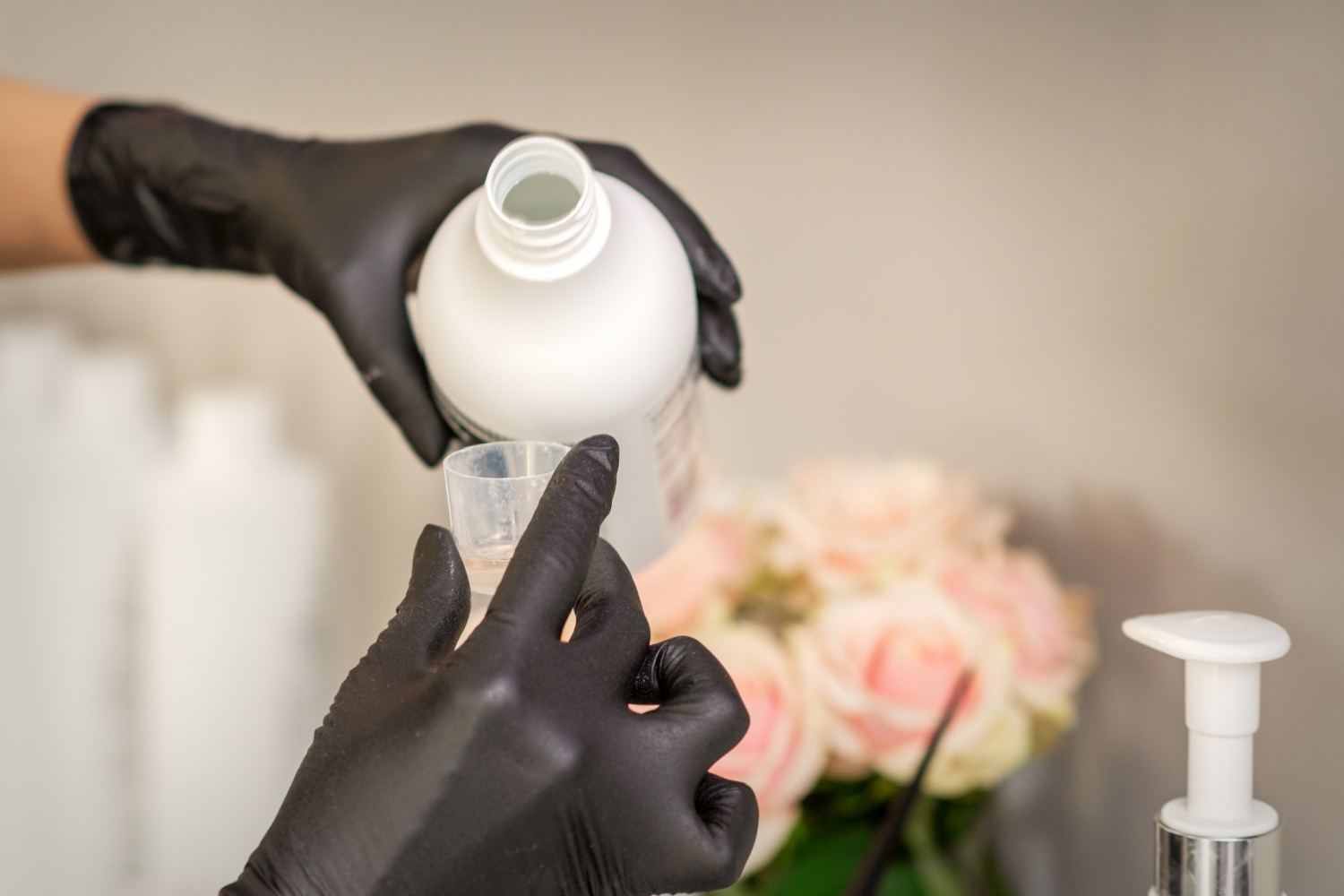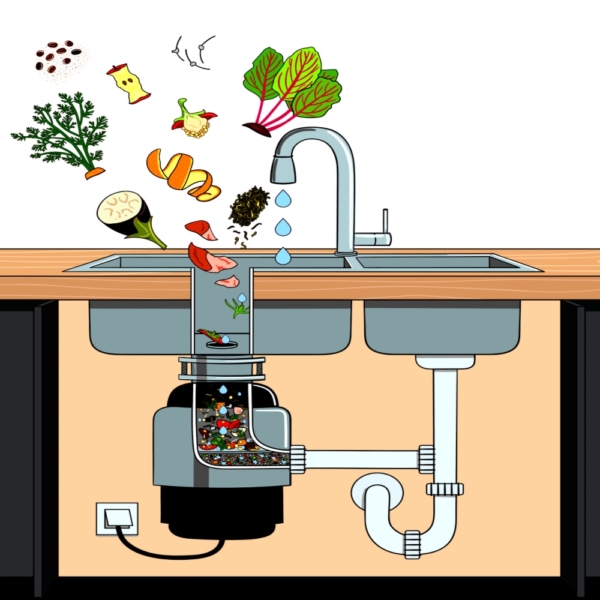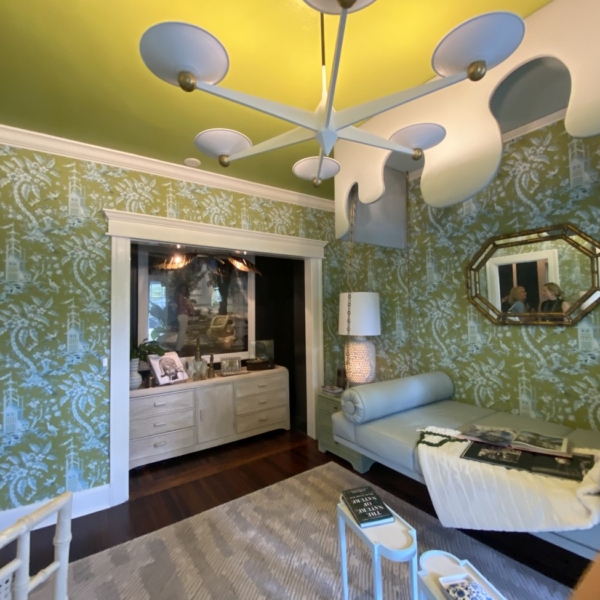Bleach is a powerful disinfectant that kills germs, viruses, mold, and bacteria in as little as five minutes. It’s safe for most hard, non-porous surfaces like toilets, showers, countertops, sinks, and children’s toys.
As powerful as it is, bleach is not suitable for all surfaces. It can damage porous and delicate materials like wood, stone, fabric, and metal. No matter where you use it, proper dilution is critical.

Diluted Bleach Ratio Guidelines
The active ingredient in bleach is hypochlorite. Most household bleaches contain 5-9% hypochlorite. Anything less than this (like what you find in laundry bleach) won’t disinfect.
Follow the dilution instructions on the bottle of bleach. If there are no instructions on the bottle, the CDC recommends mixing ⅓ cup of bleach with one gallon of room-temperature water. To make a smaller batch, mix one quart of cool or room-temperature water with four teaspoons of bleach.
Quick Tips Before Cleaning with Bleach
- Bleach doesn’t clean – it only disinfects or sanitizes. Before disinfecting with bleach, clean the area with soap and water to remove debris.
- Depending on the concentration, it takes bleach from 5-60 minutes to disinfect. During disinfecting time, bleach solutions need to be wet on the surface. After cleaning with bleach, you need to rinse it off with water.
- Don’t dilute bleach in hot water; it can lessen its efficacy. Mix bleach with cold or room-temperature water instead. The one caveat is in laundry, in which case you should bleach items on the hot cycle of your washing machine.
- Before cleaning with bleach, open windows to ventilate the room.
- Avoid getting bleach on textiles, as it will lighten the surface.
- Leaving bleach on a surface for too long (over an hour) can cause damage and lightning to the area.
- Never mix bleach with other cleaners, such as ammonia, alcohol, or vinegar. It can create toxic gasses.
- You should wear a mask when cleaning with bleach – also consider old clothes, safety goggles, and gloves.
- Bleach doesn’t break down grease or grime – it only disinfects.
Cleaning and Disinfecting the Bathroom with Bleach
To disinfect the bathroom with bleach, clean all surfaces with a multi-purpose cleaner to remove dirt build-up. Then, mix your bleach solution and tackle the following areas:
Toilet – Add ½ cup of bleach to the toilet bowl and scrub with a toilet bowl brush. Allow it to sit for five minutes before flushing. Disinfect the toilet seat, base, and lid by dipping a rag in your premixed bleach solution, wringing excess moisture, and wiping all surfaces. After five minutes, use a rag dampened in water to rinse the bleach away.
Shower Curtain Liner – Kill mold and mildew by placing your shower curtain liner in the washing machine and adding ⅓ cup of bleach to the bleach dispenser. Add a small amount of laundry detergent, wash on hot, and hang dry.
Bathtub/Shower – Bleach is safe for many bathtubs and shower surrounds, killing mold, germs, and mildew. Use a dampened microfiber cloth to remove dirt and grime from the shower or bath. Then spray the shower and tub with your diluted bleach mixture, allow it to sit for thirty minutes, and rinse.
Trash Can – Wipe the inside and outside of the bathroom trash can with bleach, allow it to set for 5 minutes, and rinse.
Sink and Counters – Wipe the sink and counters with the bleach mixture, allow it to sit for five minutes, and rinse.
How to Clean the Kitchen with Bleach
Use bleach in the kitchen to disinfect your sink, countertop, plastic cutting board, and trash can. Mix ⅓ cup of bleach with one gallon of water, wipe hard kitchen surfaces, allow the solution to sit for five minutes, and then rinse. Remove dirt and build-up with soap and water prior to disinfecting.
You can also use diluted bleach to disinfect appliance handles but don’t let it sit too long on stainless steel. Bleach is corrosive and can stain or rust stainless steel surfaces. Also, be wary of using bleach on stone countertops – it can wear down the sealant, causing your stone to look dull.
Using Bleach in the Laundry and Washing Machine
Bleach can sanitize your laundry and brighten your whites, but be careful – using the wrong type can ruin your clothes. Chlorine bleach (regular household bleach) will brighten whites, while non-chlorine laundry bleach is safe for colored fabrics.
To brighten whites with chlorine bleach, add ½ cup of bleach to your bleach dispenser and use your regular laundry detergent and a hot cycle. If your washing machine doesn’t have a bleach dispenser, start the washing machine and add your normal detergent. After about five minutes, or when the machine is filled with water, add ½ cup of bleach to the drum.
You can also use chlorine bleach to disinfect and kill mold and foul odors inside the washing machine.
- Start with an empty washing machine.
- Add ½ cup of bleach to your bleach dispenser (allow water to fill and add it directly to the drum if you don’t have a bleach dispenser)
- Select the washer’s hottest cycle
- Allow the washer to run
- Run an extra rinse cycle
- Dry the inside of the washing machine with a towel
- If there’s still a musty smell coming from your washer, repeat these steps
Killing Household Mold with Bleach
There’s debate about whether vinegar or bleach is the better mold killer. If you prefer bleach, use it to kill mold on your drywall, shower surround, and other non-porous surfaces.
Before you start, wear safety gear, including gloves and a respirator mask. Then, use a combination of soap, water, and a scrub brush or paper towels to remove mold from the surface. Mix one cup of bleach with a gallon of water and fill a spray bottle. Spray the moldy area and allow the solution to sit for fifteen minutes before rinsing and drying. The bleach will kill the mold spores, preventing them from growing back.
Cleaning Vinyl Siding with Bleach
A bleach solution can clean vinyl siding and kill mold and mildew. But, it’s important to properly dilute it and rinse it off. Using too strong of a solution or leaving it on too long can damage vinyl.
- Mix ⅓ cup of bleach with one gallon of warm water
- Apply the solution with a sponge or a soft-bristled brush
- Allow it to sit for a couple of minutes, and then hose it off (don’t allow the bleach mixture to dry to the siding)
How to Clean Toys with Bleach
Kids toys are prone to germs, viruses, and nasty dirt build-up. You can clean hard, non-porous kids’ toys (like most plastics), but avoid using bleach on fabric toys or those with batteries. Be sure to ventilate the room and put on plastic gloves and old clothes first.
Option # 1 – Submerge Toys in a Bleach Mixture
Fill a plastic bucket with one gallon of room temperature water and ⅓ cup of bleach. Submerge the toys for five minutes, rinse well, and dry.
Option # 2 – Spray Toys with a Bleach Solution
Dilute bleach at a ratio of four teaspoons per one quart of water and place in a spray bottle. Place the toys in a sink or on a plastic tarp and spray them with the bleach solution. After five minutes, rinse well and then dry.
How to Clean a Concrete Patio with Bleach
Diluted bleach kills green mildew build-up on concrete, leaving it like new. Before you start, use a leaf blower or broom to remove all leaves and debris from the patio. Also, move all patio furniture out of the way.
For this project, you’ll need bleach, water, a soft-bristled scrub brush with a long handle, and a garden hose. Wear old clothes and shoes before you start.
Mix one gallon of water with ⅓ cup of bleach. Dip your scrub brush in the mixture and apply it to the concrete using long back-and-forth motions. Allow the solution to sit for six minutes, then rinse with your garden hose.
Use the same solution and scrub brush to remove mildew build-up on your outdoor furniture. (Skip fabric cushions, though) Then, rinse clean with your hose after six minutes.


